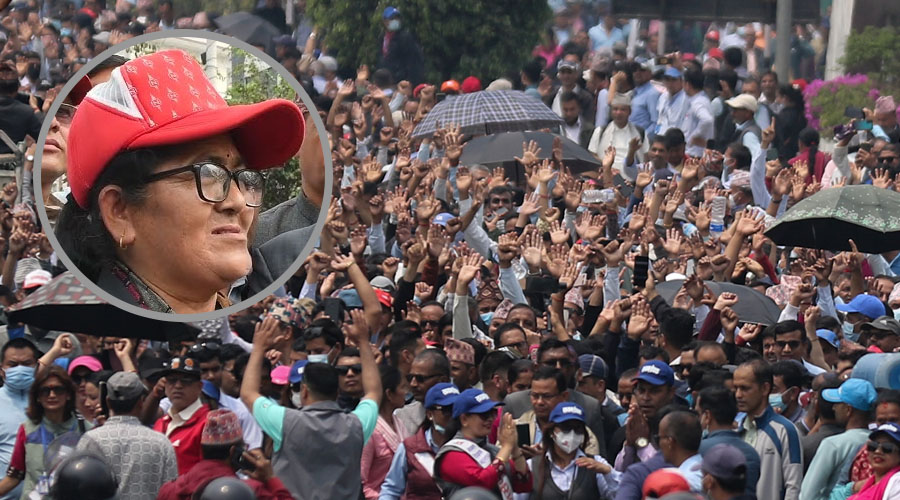The United States Parliament has endorsed an Act, which will open duty-free and quota-free access to the US market for Nepali goods once the US President signs it.
Onlinekhabar caught up with former ambassador to the US and former vice-chair of the National Planning Commission, Dr Shanker Prasad Sharma, to talk about the Trade Facilitation and Trade Enforcement Act of 2015.
First of all, could you give us a brief background of the Trade Facilitation and Enforcement Act of 2015? How did it take shape ?
In January 2015, US Senator Dianne Feinstien, who is a Democrat from California, introduced a Bill in the senate to provide duty-free access for Nepali goods. But there was no discussion on the Bill after that for quite sometime. In June this year (after the April 25 and May 12 earthquakes), the Nepal caucus, which was formed during my tenure as Nepal’s ambassador to the US (Representatives Ander Crenshaw (Republican-Florida) and Jared Polis (Democrat-Colorado) are co-chairs of the caucus) presented a Bill in the Parliament. When discussions in the Bill were underway, its sponsors told members of the Parliament that Nepal has successfully promulgated a democratic constitution and brought rebels to mainstream politics. They pointed that more than 9,000 people died in the earthquakes, and a US citizen from Polis constituency in Colorado was also killed on the Everest, during the spate of disasters.
According to the Bill, all carpet, garment and textile-related Nepal-made goods will get duty-free, quota-free access to the US market. It also states that the US will help build the capacity of Nepal’s trade promotion centre, the government of Nepal, as well as the private sector so that they can benefit from the facility on offer.
So the Bill will become legislation after the President gives it his assent?
Normally, the President gets around 180 days to sign the Bill. But it usually does not take that long. We have time to make adequate preparations and reap benefits.
Well, the country has suffered massive jolts from the Maoist war, a big earthquake and now we are grappling with a blockade. Do you think we have the institutional capacity to reap benefits from a legal instrument this?
We are already exporting garments worth around Rs 1.5 billion. The figure stood at around Rs 12 billion in 2002; going by the trend, one would expect the number to reach Rs 24 billion now, but that is not the case. But even without the duty-free arrangement (which ended in 2005), there are certain groups, especially of Nepalis in the US, who continue to import Nepali garments. And there are people, who have had first-hand experience in the industry, but have switched to other businesses. But they still have their old contacts.
Once the Bill becomes the law, investors will see opportunities to put their money in the Nepali garment industry; the investors could be anywhere, even from foreign countries. US-based garment companies will also start enquiries about sourcing products from Nepal, because the new arrangement will make it cheaper to import from Nepal.
So, does it mean that Nepali exporters can export as much as they want, without a quota?
As things stand now, Nepali exporters have to pay around 17 per cent tariff on ready-made garments. The legislation will bring it down to zero. The garment business has many sides; it has the capacity to employ a lot of people. I believe that even if production levels reach that of 2002, around 500,000 Nepalis, most of whom are poor women, will get employment.
According to an estimate, 1.5 million Nepalis will benefit from this.
The arrangement also comes at a time when Nepal has a huge trade deficit with its trading partners, and the earthquakes and the blockade are expected to push 1.2 million people below the poverty line. The good thing about this arrangement is that the US government will not only provide duty-free entry to its market, but also help build capacity of the government and the private sector to carry out trade effectively.
The Act says there should be a 35 per cent value addition in the products being exported.
Well, that is the international norm. But, if we take the packaging, the stitching and the transportation costs into account, the value added well exceeds 35 per cent.
Because of the blockade, supply chains have been disrupted, and manufacturers are not able to import raw material from India. How will this affect potential exporters?
First, it will take time for the Act to be signed into law. The blockade is temporary, it will be lifted soon. But manufacturers also have the option of getting their raw material from the North. Chinese fabric is also of good
standard, so is fabric from the Philippines and Indonesia.
Sub-saharan countries and Afghanistan have been getting this facility. How is the competition going to be?
Yes, there will be competition. Cambodia and Bangladesh have done exceptionally well in garments. And there are giants like India and China. But they have to pay 17 per cent tariff. On the other hand, we have to pay
nothing. And that is why we can easily compete, both with African countries, and the big exporting countries. The government should take suitable measures so that we can make full use of the facilities on offer.
Well, shipping costs from Nepal are pretty high, aren’t they? How much of it can be offset by the 17 per cent difference?
The 17 per cent difference is no small thing. Anyone, who wishes to start a garment factory, can do so within six months. The difference is enough to get a price advantage in the US market.
Is there a threat of manufacturers based outside Nepal using this facility to sell products sourced from outside Nepal?
Yes. But the US government will take some measures against this, and the Nepali government should also do the same.



















